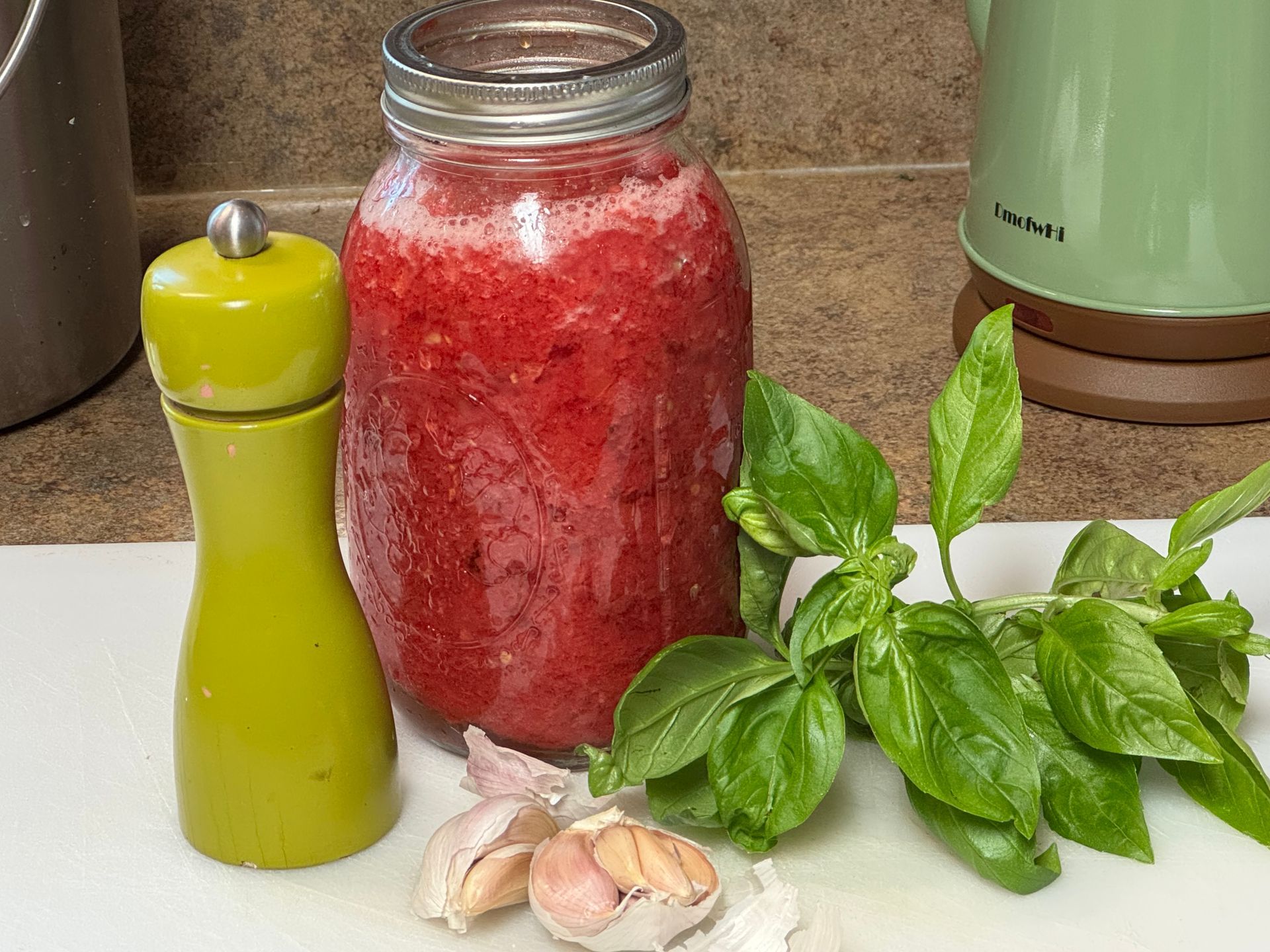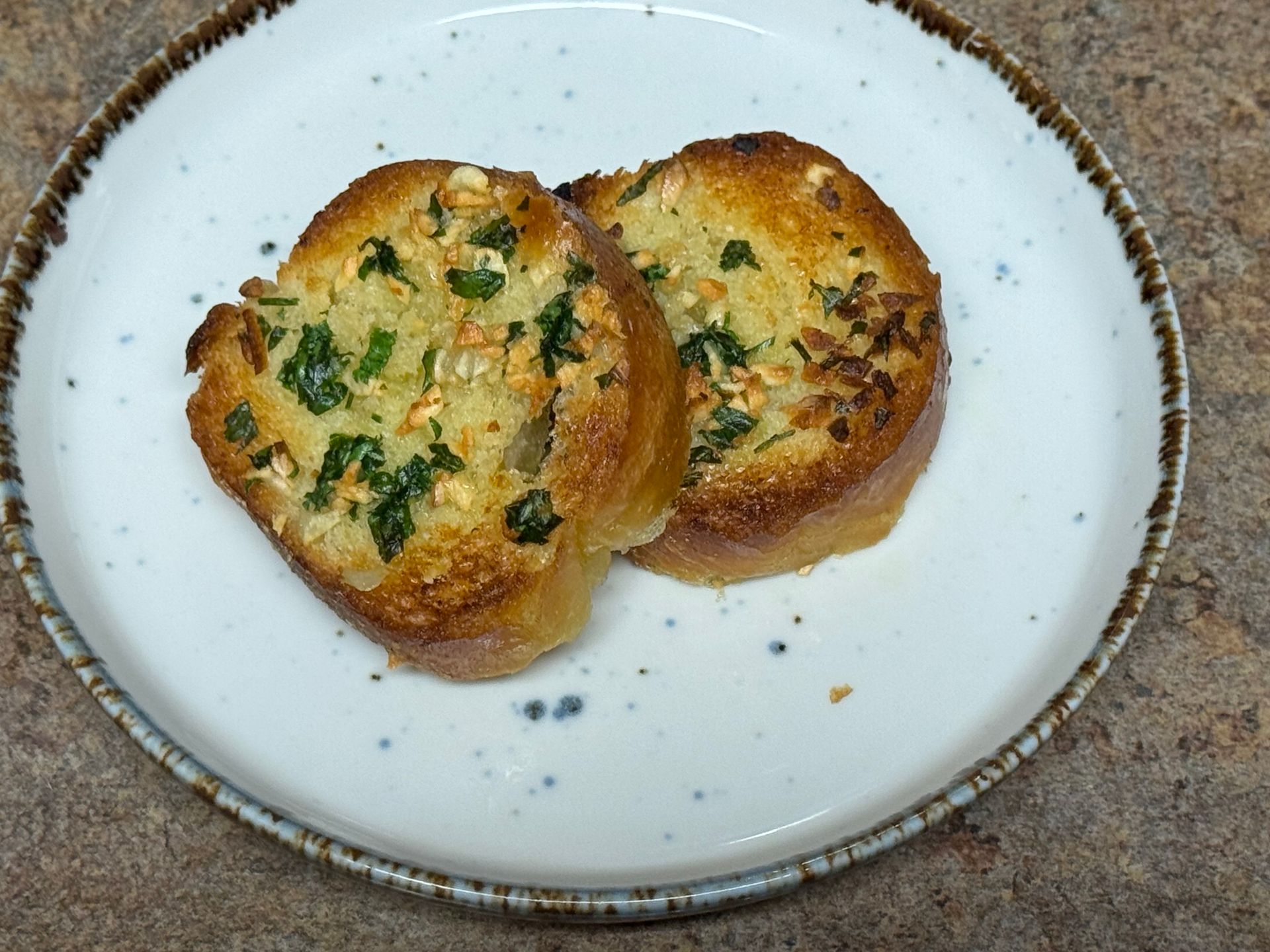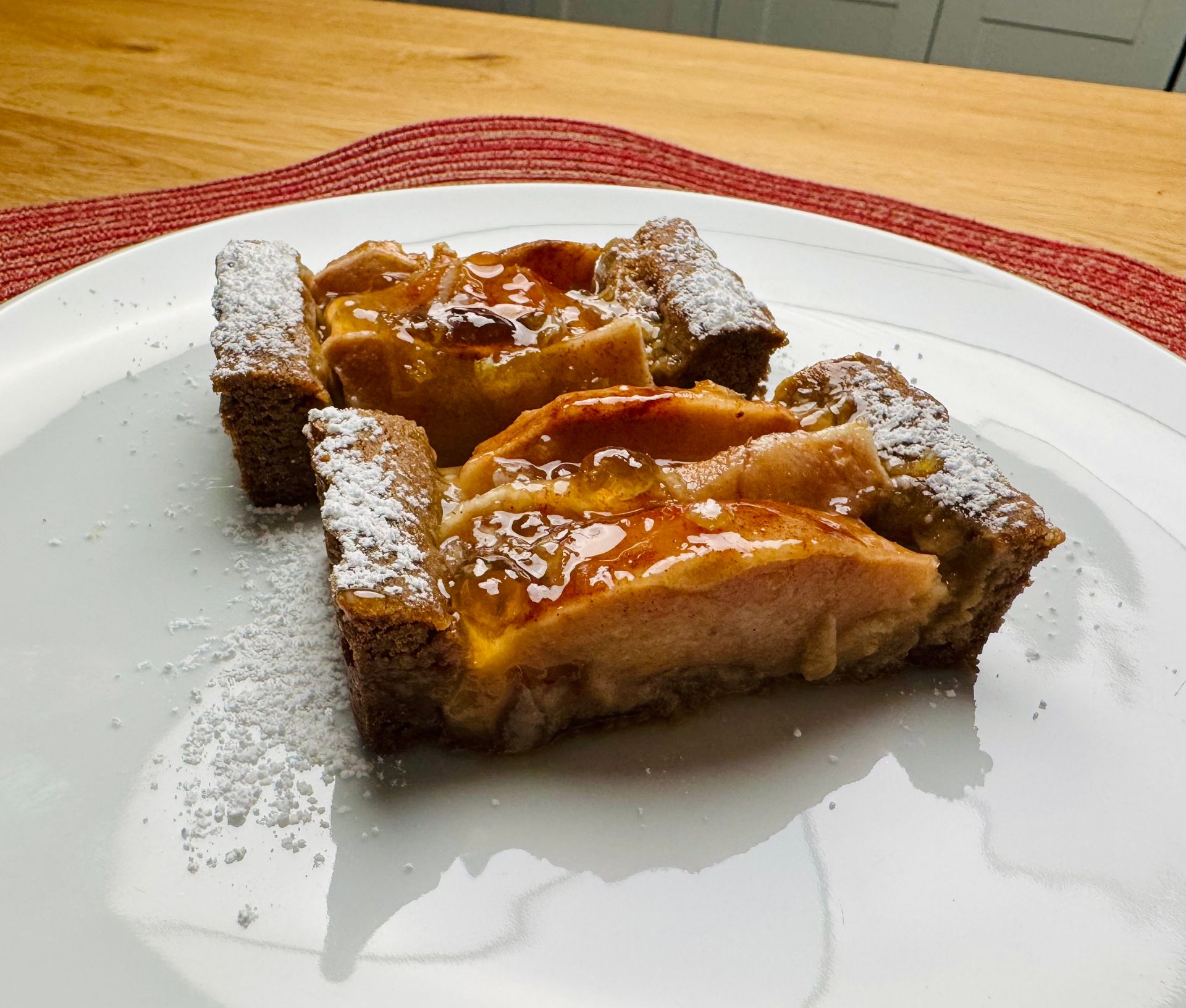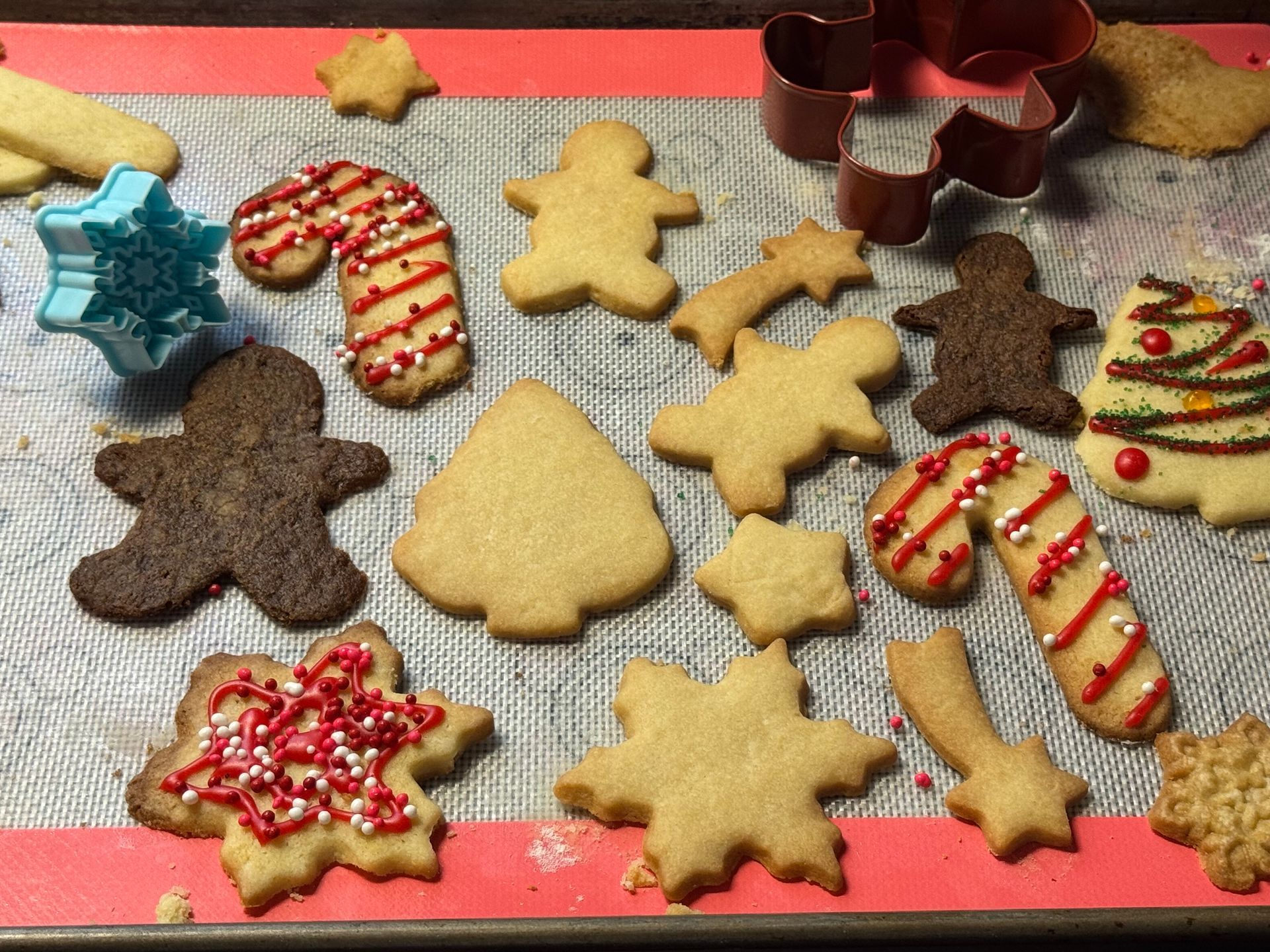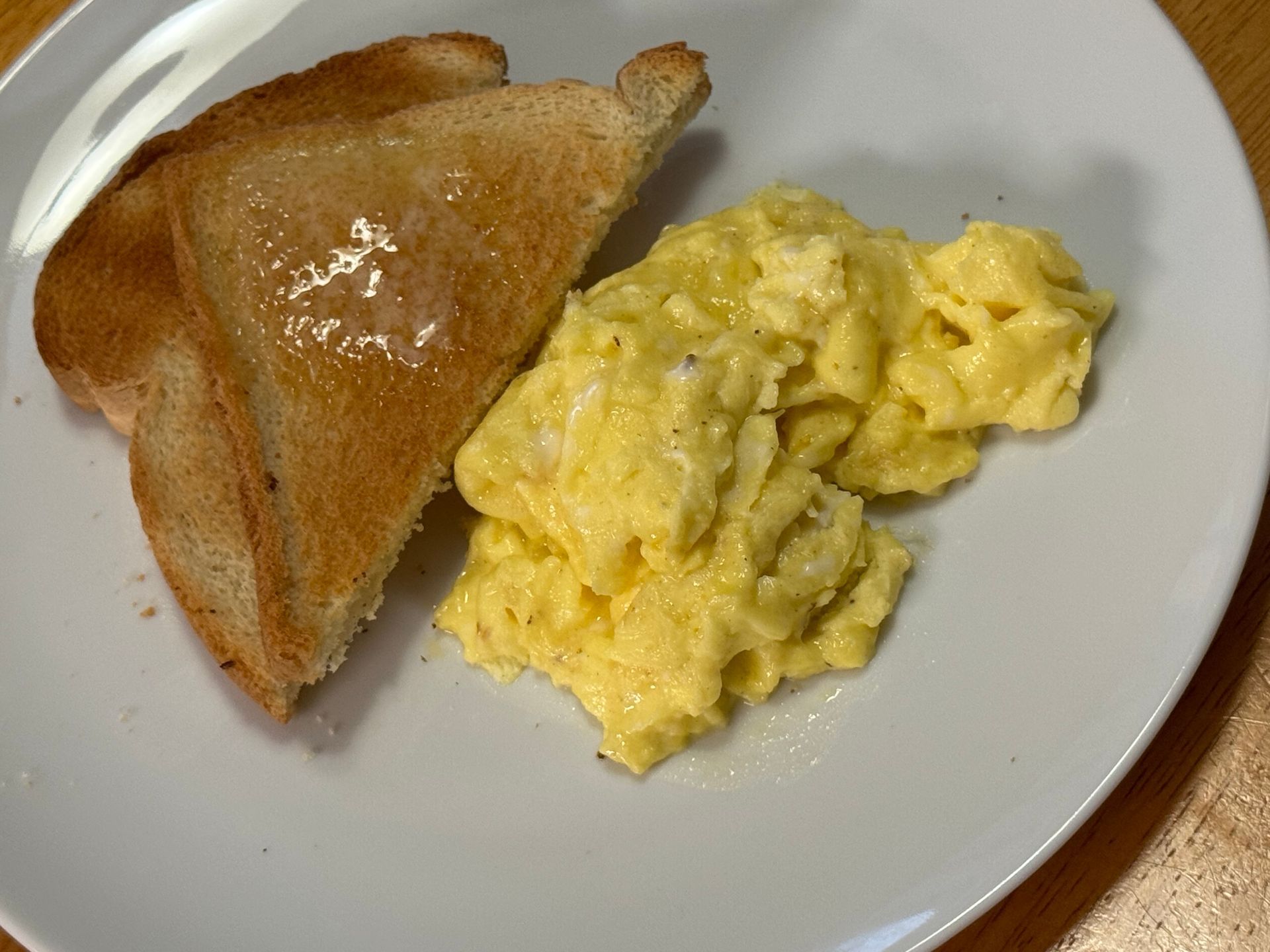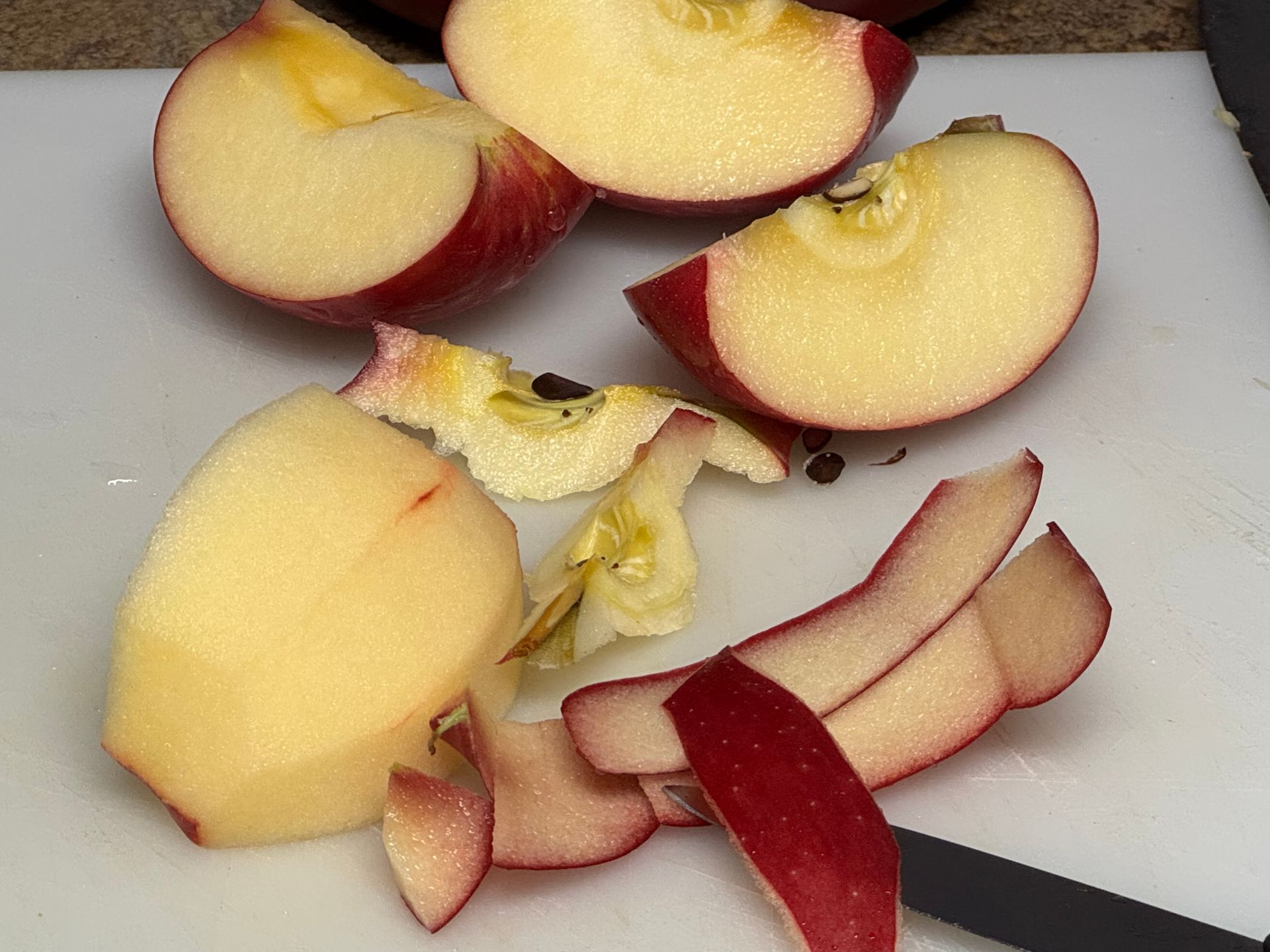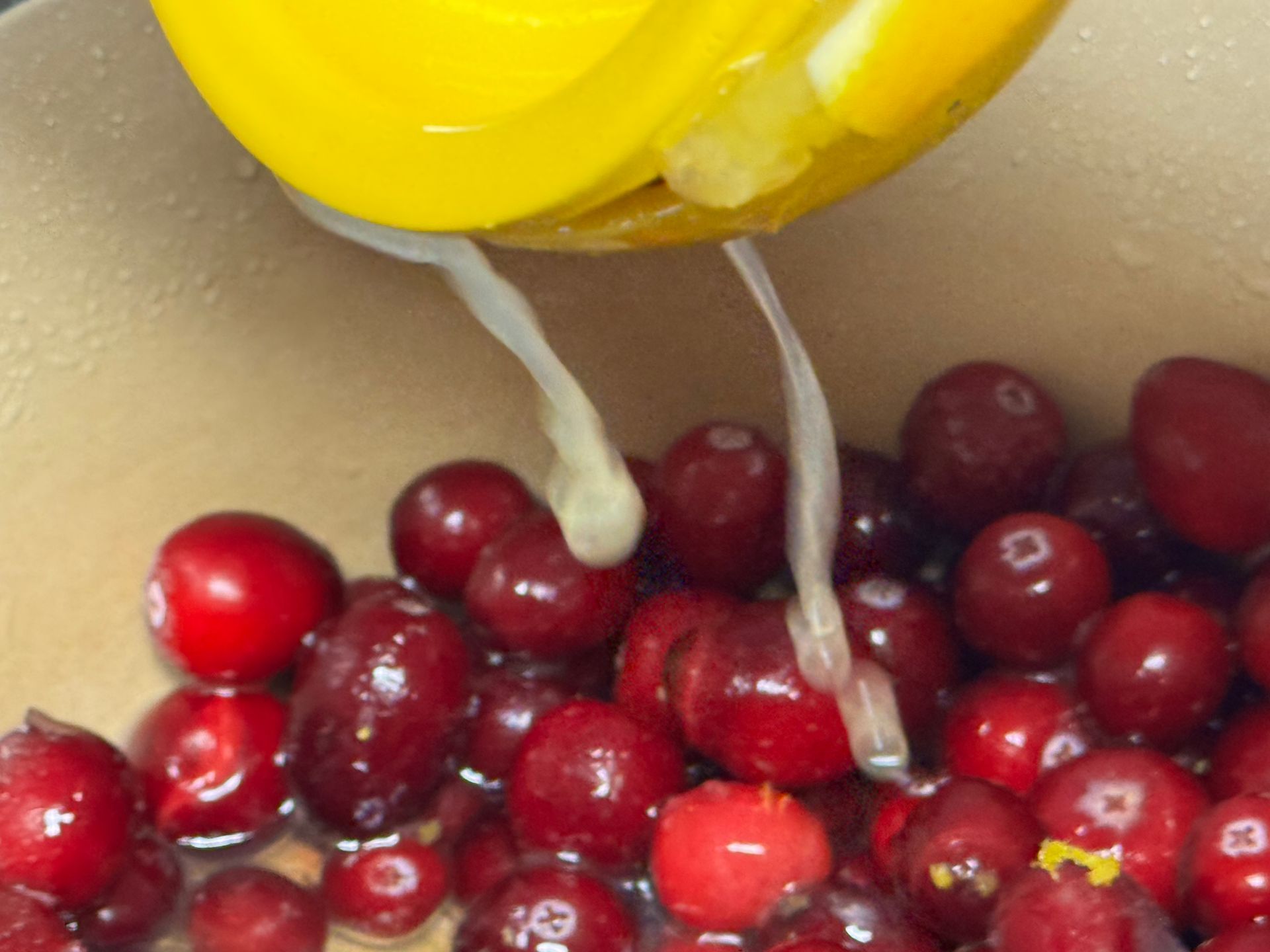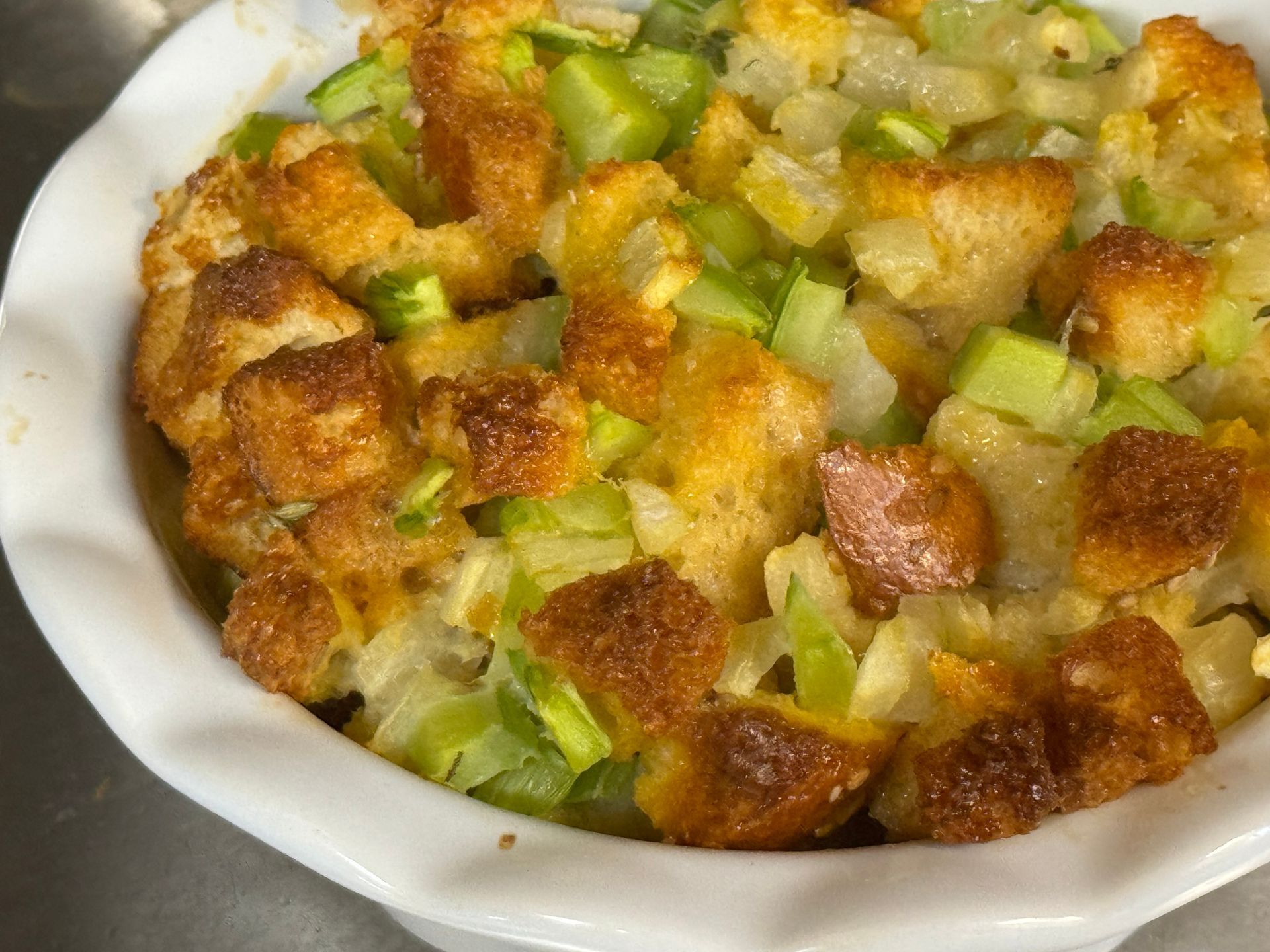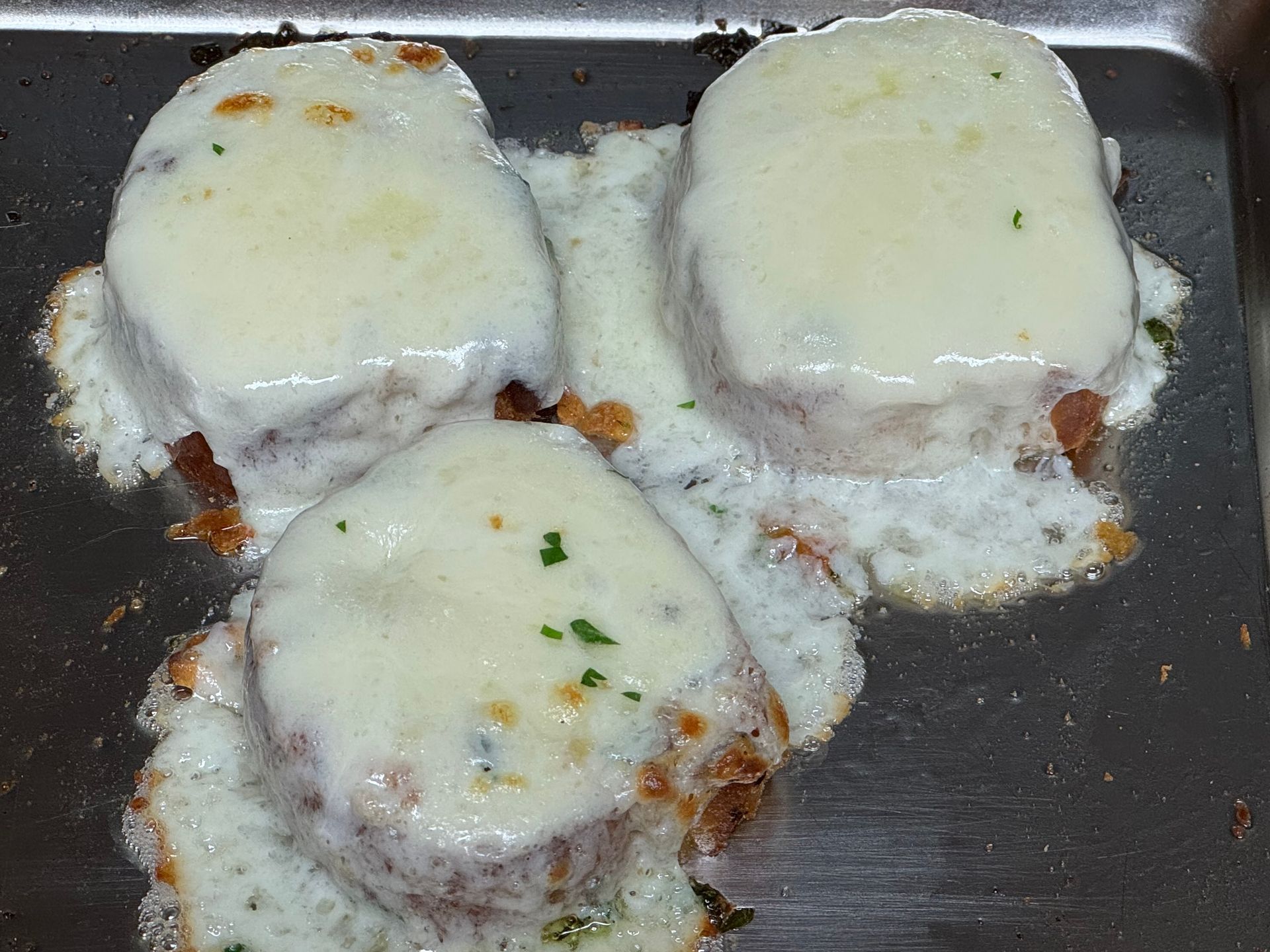
While practicing for the CMC exam, I remember reading about a candidate who developed delicious flavor for her seafood terrine by simmering fresh herbs in heavy cream. I practiced this technique repeatedly & learned this technique for when I prepare mousseline forcemeat.
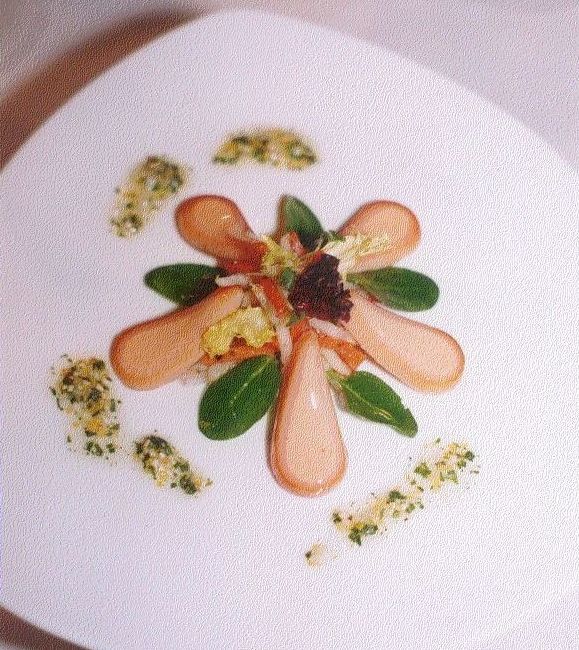
Salmon Fillet en Croute/ Salmon Terrine
This is an advanced recipe I practiced repeatedly with CMC Stephen Giunta during our years of preparation for the CMC exam. I love that it replicates the shape of a salmon fillet. I’ve made similar terrines with chicken, lobster, scallops etc. for many dinners and events -always a crowd pleaser. And I always simmer fresh herbs in the heavy cream for the delicious, delicate flavor!
This photo is a smoked trout fillet wrapped around the same salmon mousseline. This plate won a gold metal in Erfurt, Germany for the Culinary Olympics. I was a member of the CIA Olympic team.
Prep Time: 6o min
Cooking Time: 30 min
Ingredients
Salmon Mousseline Forcemeat
1 lb. Salmon, cleaned
3 ea Shallots, peeled & minced
2 Tbsp Butter, unsalted
2 slice White bread, no crusts, cubed
8 tbsp. Heavy cream
1 Tbsp Fresh herbs (dill, tarragon, parsley, basil)
1 tbsp Kosher salt
¼ tsp Cayenne pepper
1 tsp Paprika
¼ tsp Nutmeg
1 ea Egg yolk
1 1/2 ea Egg whites
To prepare the Forcemeat
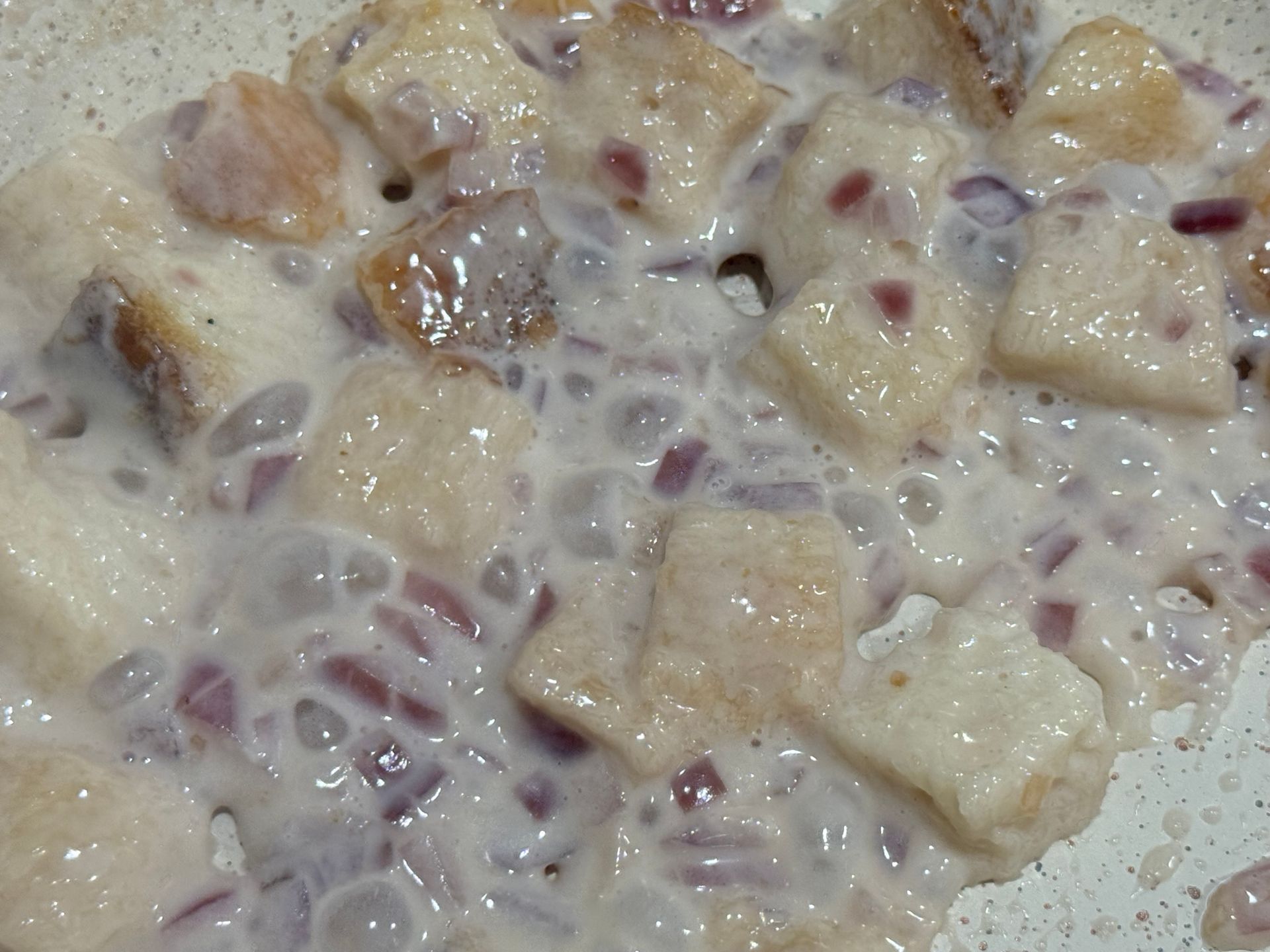
Step 1 Making the mousseline forcemeat
Sweat the shallots and diced bread in butter, add cream and fresh herbs and simmer until it is ‘roux-like’ in texture. Cool completely and grind with the salmon, place into a cold bowl and add the seasonings. Fold in a small amount of egg at a time so the eggs incorporate evently (over ice). Add cream slowly to incorporate, then poach a quenelle to evaluate for seasoning and flavor. Seafood is sometimes different in texture so the cream usually fluctuates by an ounce or so…
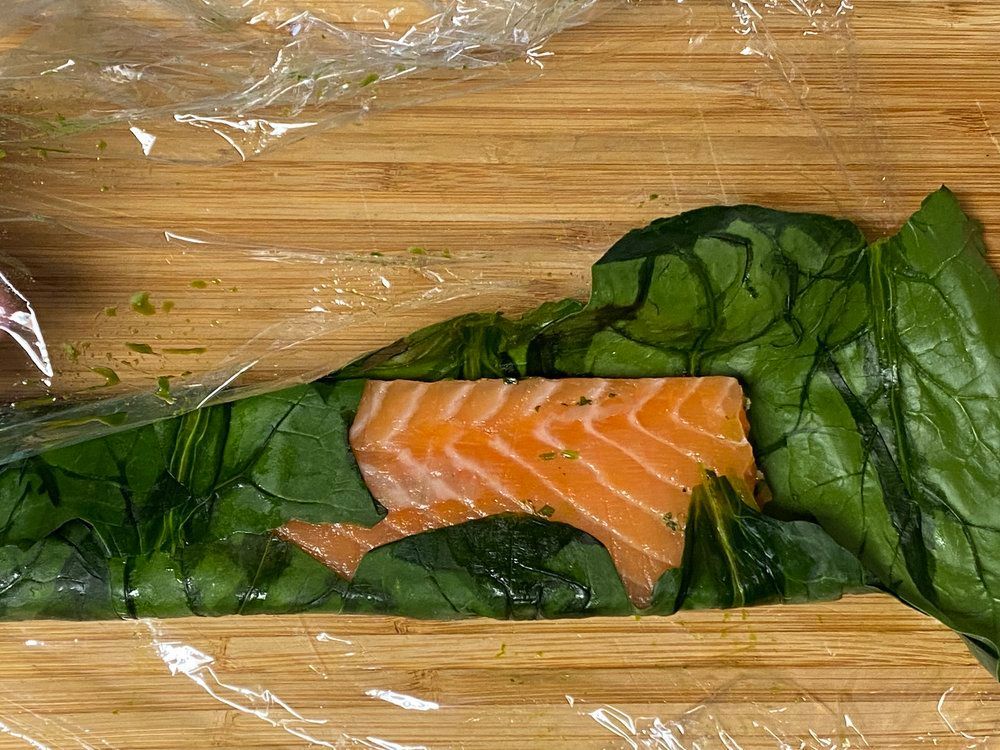
Step 2 Wrapping the salmon fillet
I carefully lay rinsed, dried spinach leaves overlapping between two sheets of plastic wrap; roll firmly until the spinach becomes one, flat sheet. You may blanch the spinach if you like but it’s not necessary.
Carefully wrap the spinach around the salmon fillet. I like to get the salmon fillet very cold and I always season the salmon with salt and pepper, the salt helps to make the flesh a little firmer.
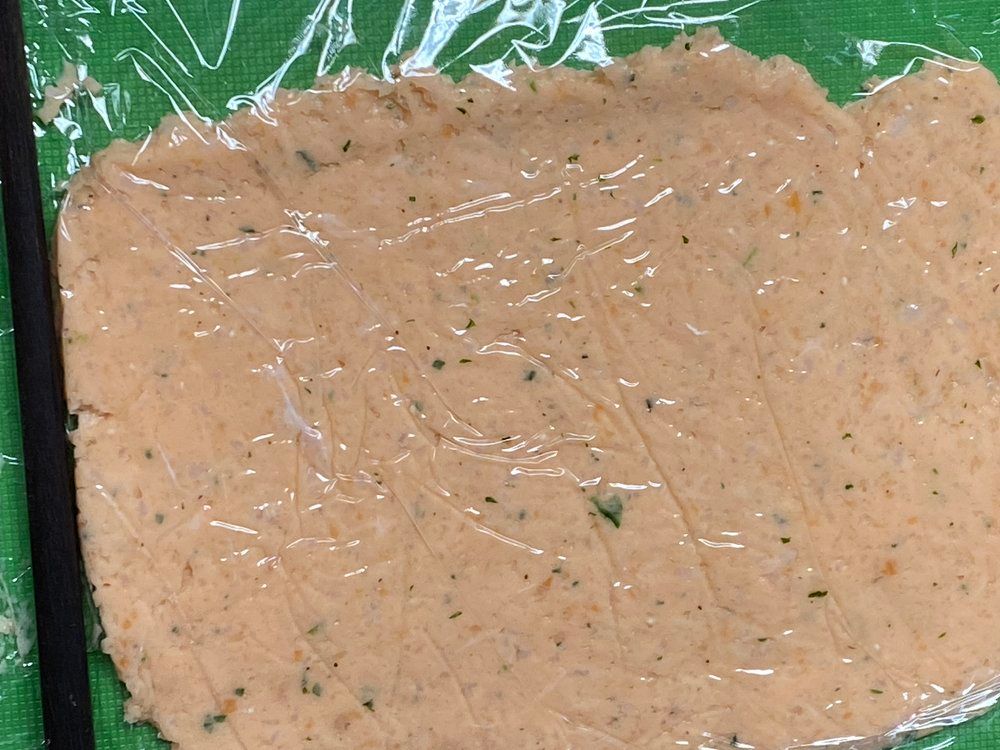
Step 3 Rolling the mousseline forcemeat
Spread the salmon forcemeat onto a sheet of plastic wrap (about 1/8th inch thick), cover with a second sheet of plastic wrap. I actually place chop sticks (one on the left side and one on the right side of the wrapped salmon forcemeat) as a guide to roll over the forcemeat until it is evenly flat. Then I unwrap the top sheets of plastic and lay the spinach wrapped salmon fillet gently onto the forcemeat.
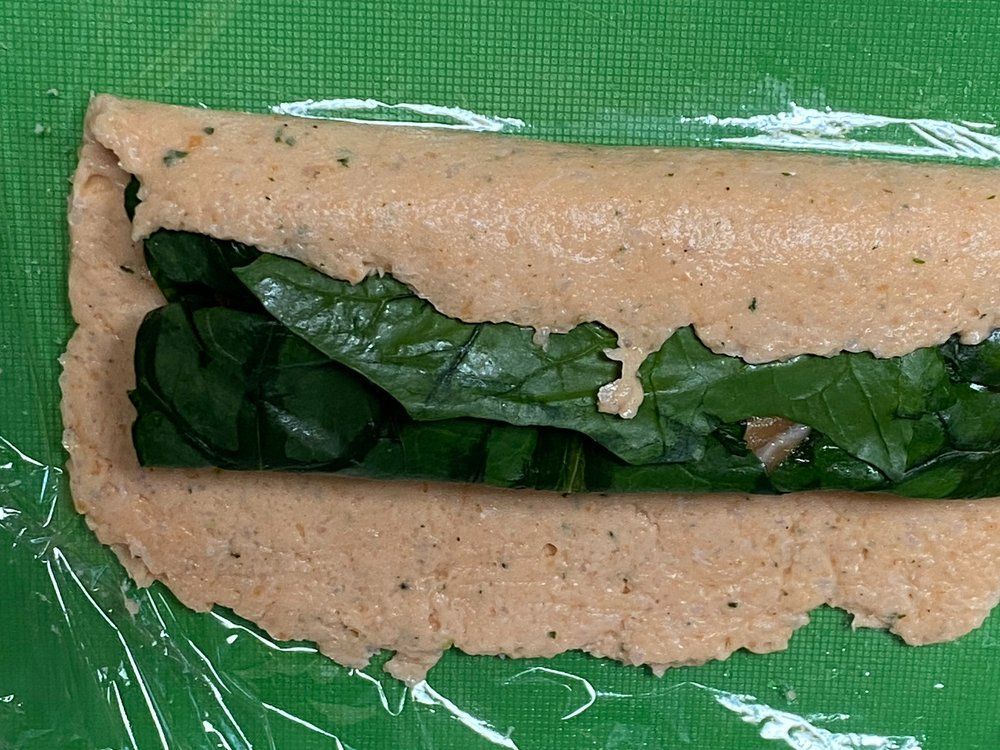
Step 4 Assembly and cooking
Using a palette knife, gently spread the forcemeat so it completely covers the spinach wrapped salmon fillet. Wrap the fillet in plastic and seal on both ends with string. I place the wrapped salmon terrine onto a sheet of acrylic with the side the skin was on, down so the natural shape of the salmon fillet remains.
It’s fine to poach on top of the stove or in the oven (in a water bath) at 250° F until the internal final temperature reaches 145° F.
I find the terrine slices better the next day. Enjoy!

Slicing and presenting
The salmon terrine can be sliced thinly and overlapped or in a thicker slice which can stand up. Since this salmon terrine is assembled to replicate the actual shape of salmon fillet, I chose to serve one, thicker slice.
I like an emulsion style sauce made with pasteurized egg yolks, mustard, vinegar and oil. This sauce has diced pickles, lemon zest, fresh dill and pepper.
Salmon is delicate and pairs well with asparagus, cucumbers and tomatoes, dressed simply with lemon juice and salad oil.
